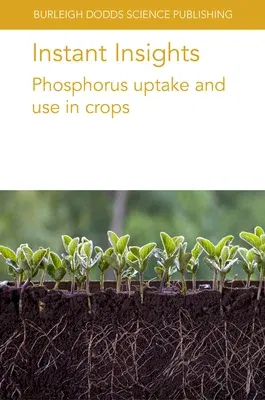Jiayin Pang
(Author)Instant Insights: Phosphorus Uptake and Use in CropsPaperback, 21 March 2023

Qty
1
Turbo
Ships in 2 - 3 days
In Stock
Free Delivery
Cash on Delivery
15 Days
Free Returns
Secure Checkout

Part of Series
Burleigh Dodds Science: Instant Insights
Print Length
174 pages
Language
English
Publisher
Burleigh Dodds Science Publishing Ltd
Date Published
21 Mar 2023
ISBN-10
1801466084
ISBN-13
9781801466080
Description
Product Details
Authors:
Book Format:
Paperback
Country of Origin:
US
Date Published:
21 March 2023
Dimensions:
22.86 x
15.24 x
1.02 cm
ISBN-10:
1801466084
ISBN-13:
9781801466080
Language:
English
Location:
Cambridge
Pages:
174
Publisher:
Weight:
263.08 gm